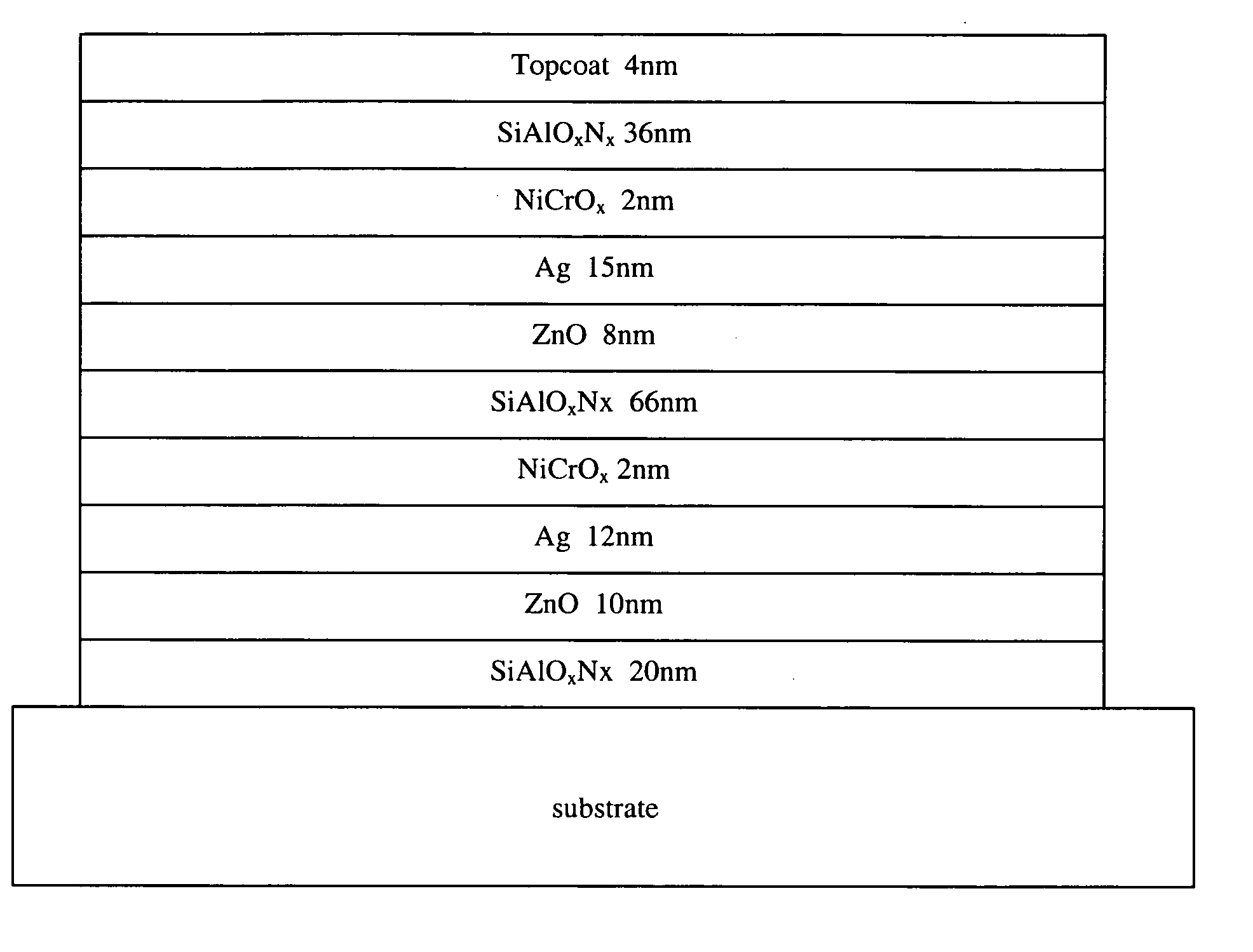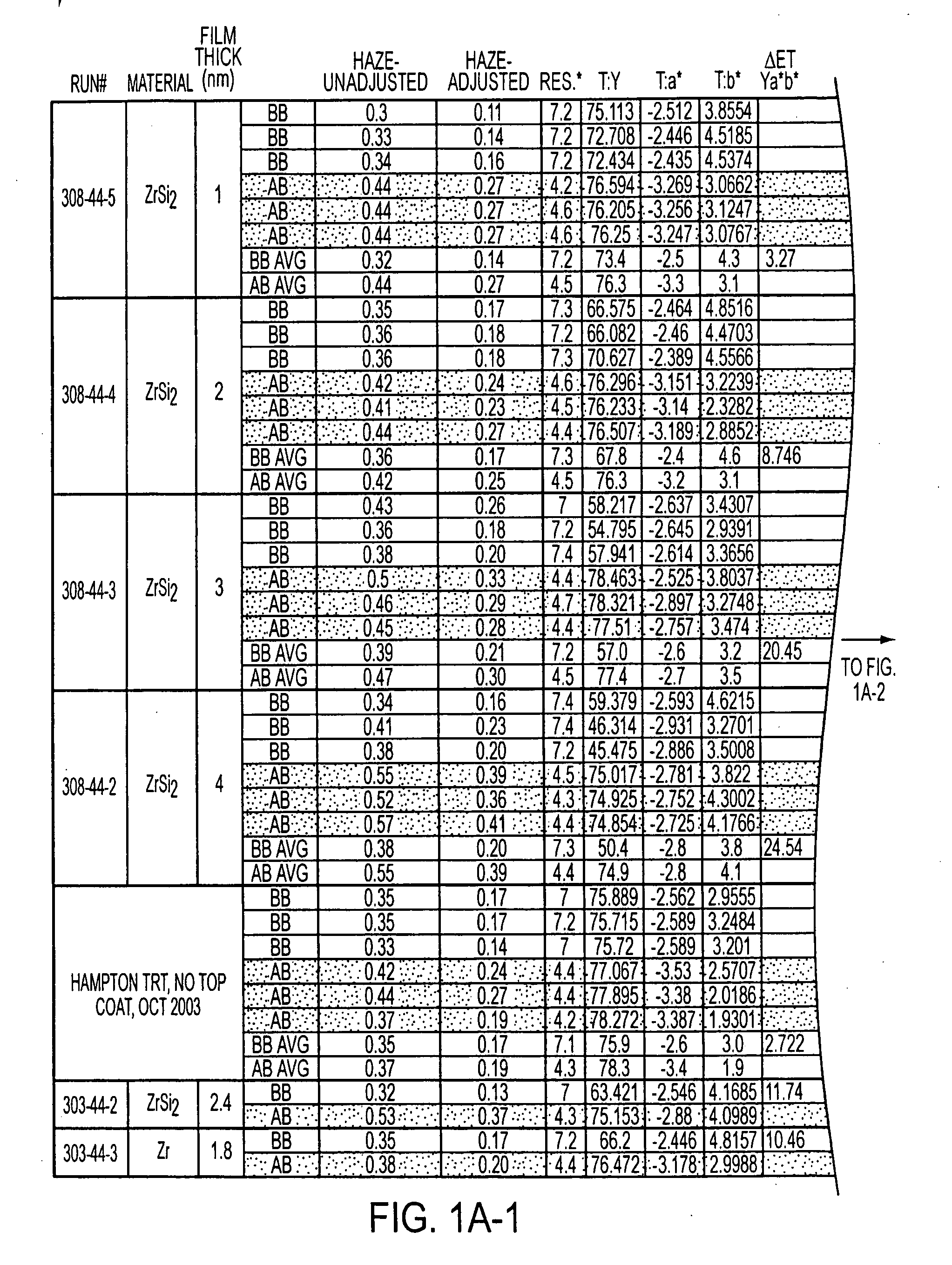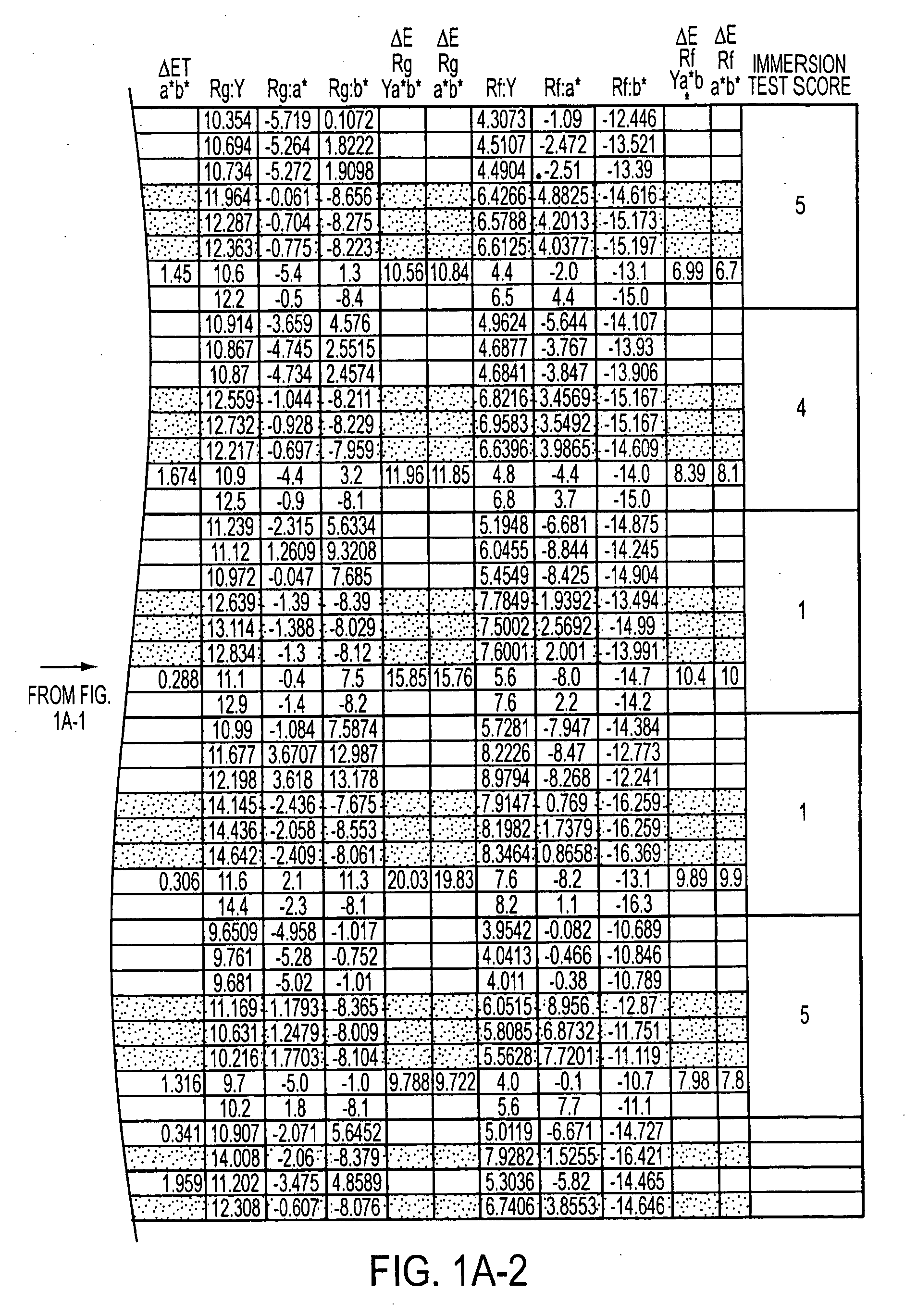Protective layer for optical coatings with enhanced corrosion and scratch resistance
a protective layer and coating technology, applied in the field of outer protective layers, can solve the problems of ineffective scratch protection, silver based low-emissivity coatings are particularly susceptible to corrosion problems, and optical coatings are often damaged during shipping and handling, so as to reduce damage from corrosion and scratching damage, the effect of sufficient hardness and durability
- Summary
- Abstract
- Description
- Claims
- Application Information
AI Technical Summary
Benefits of technology
Problems solved by technology
Method used
Image
Examples
example 1
[0071] Various oxidizable barriers were deposited on an optical stack consisting of glass / TiO2 / NiCrOx / TiO2 / Ag / NiCr / Ag / NiCrOx / SiAlNx. The oxidizable barriers included Zr metal, Zr doped with nitrogen but substantially metallic, Zr silicide, Zr silicide doped with nitrogen, and Ti3Al.
[0072] Corrosion protection for the silver containing stack was substantially improved with all of the oxidizable barriers tested, however, Zr silicide provided better corrosion protection than Zr metal. Nitrogen doping made no change in corrosion protection of the base metal as long as the doping levels were low. Increasing the amounts of nitrogen eventually decreased the metal corrosion protection. Zr silicide also provided better scratch protection than Zr metal. FIGS. 1 and 2 show the results for ZrSi2 and Ti3Al.
example 2
Immersion Test Procedure
Making the Stock Solution
[0073] 320 grams of NaCl were weighed out into a beaker filled with hot reverse osmosis filtered water on a heated stir plate.
[0074] NaCl was added slowly so that it dissolved completely before adding more. Once the NaCl was completely dissolved the mixture was poured into a 1-gallon container. The beaker was rinsed out with RO water and poured into a jug to completely remove the NaCl from the beaker.
[0075] 240 ml of 0.1 N KOH was measured into a 1 -gallon container.
[0076] Enough RO water was added to bring the final volume to 3.95 L.
[0077] Samples were cut to the desired size. 2″×2″ is the current typical size. If the samples are to be removed one at a time at different time intervals, a 5″×2″ size is easier to handle.
[0078] The samples must be kept free of fingerprints, cutting oil, or scratches. Contamination or scratches will bias results.
Preparing Solution for Use
[0079] 250 ml of stock solution was...
example 3
[0088] Scratch test procedure—scratch resistance (mechanical durability) was determined using a Scotch Brite™ scratch test. The test uses an Erichsen model 494 brush tester and Scotch Brite 7448 abrasive. The amount of damage can be measured in three ways: change in emissivity, haze, and film side reflection.
[0089] Scotch Brite™ (made from SiC grit adhered to fibers) pads were cut down from 6″ by 9″ to 2″ by 4″. The Erichsen brush tester was used as the mechanism to move the abrasive over the sample. A standard weight brush or a modified brush holder was used to hold the abrasive against the sample. New abrasive was used for each sample.
[0090] Damage caused from scratching was measured in three ways: variation of emissivity, delta haze, and delta E for film side reflectance. The variation of the emissivity is measured as the difference between the pre-scratched and scratched film. These measurements were then used in the following formula:
(Escratch−Efilm) / (Eglass−Efilm) Eqn. 1
[00...
PUM
| Property | Measurement | Unit |
|---|---|---|
| thickness | aaaaa | aaaaa |
| thickness | aaaaa | aaaaa |
| thick | aaaaa | aaaaa |
Abstract
Description
Claims
Application Information
 Login to View More
Login to View More - R&D
- Intellectual Property
- Life Sciences
- Materials
- Tech Scout
- Unparalleled Data Quality
- Higher Quality Content
- 60% Fewer Hallucinations
Browse by: Latest US Patents, China's latest patents, Technical Efficacy Thesaurus, Application Domain, Technology Topic, Popular Technical Reports.
© 2025 PatSnap. All rights reserved.Legal|Privacy policy|Modern Slavery Act Transparency Statement|Sitemap|About US| Contact US: help@patsnap.com



